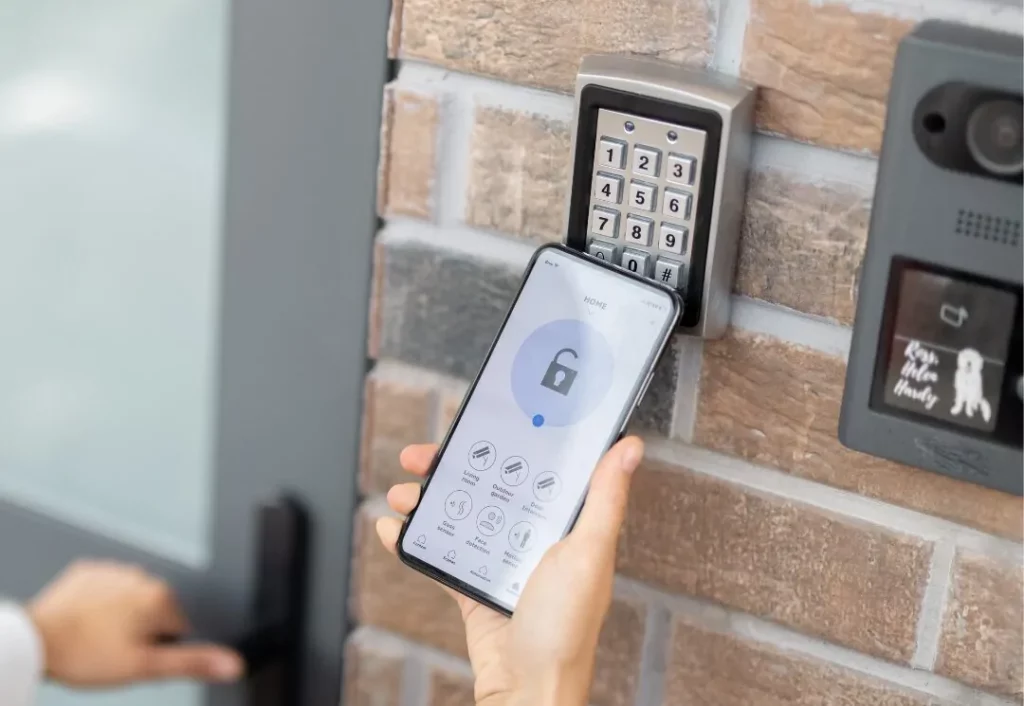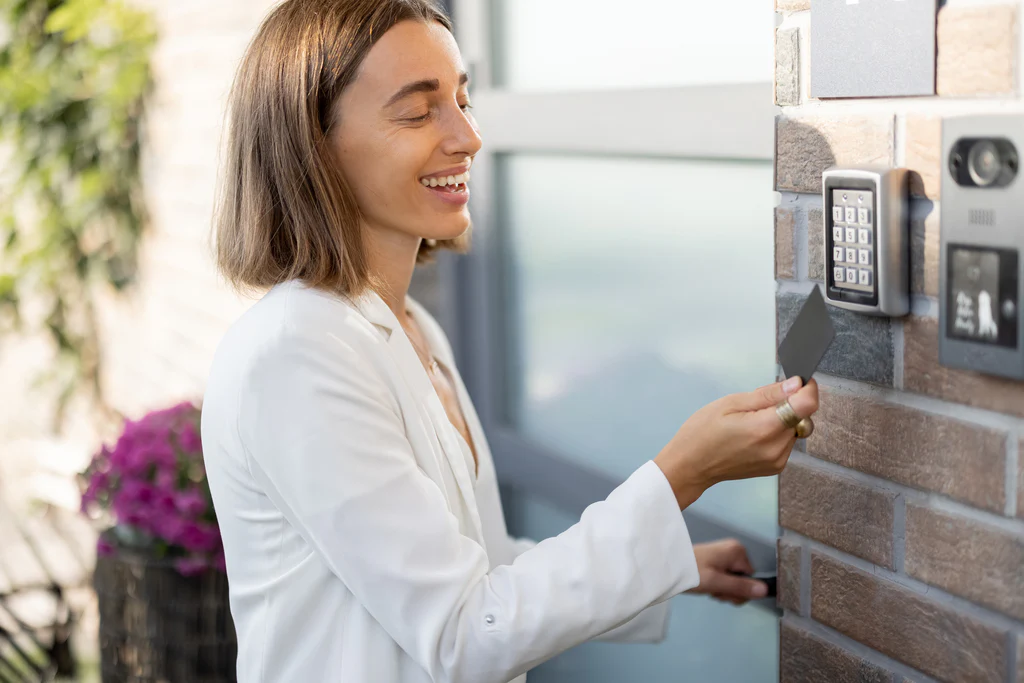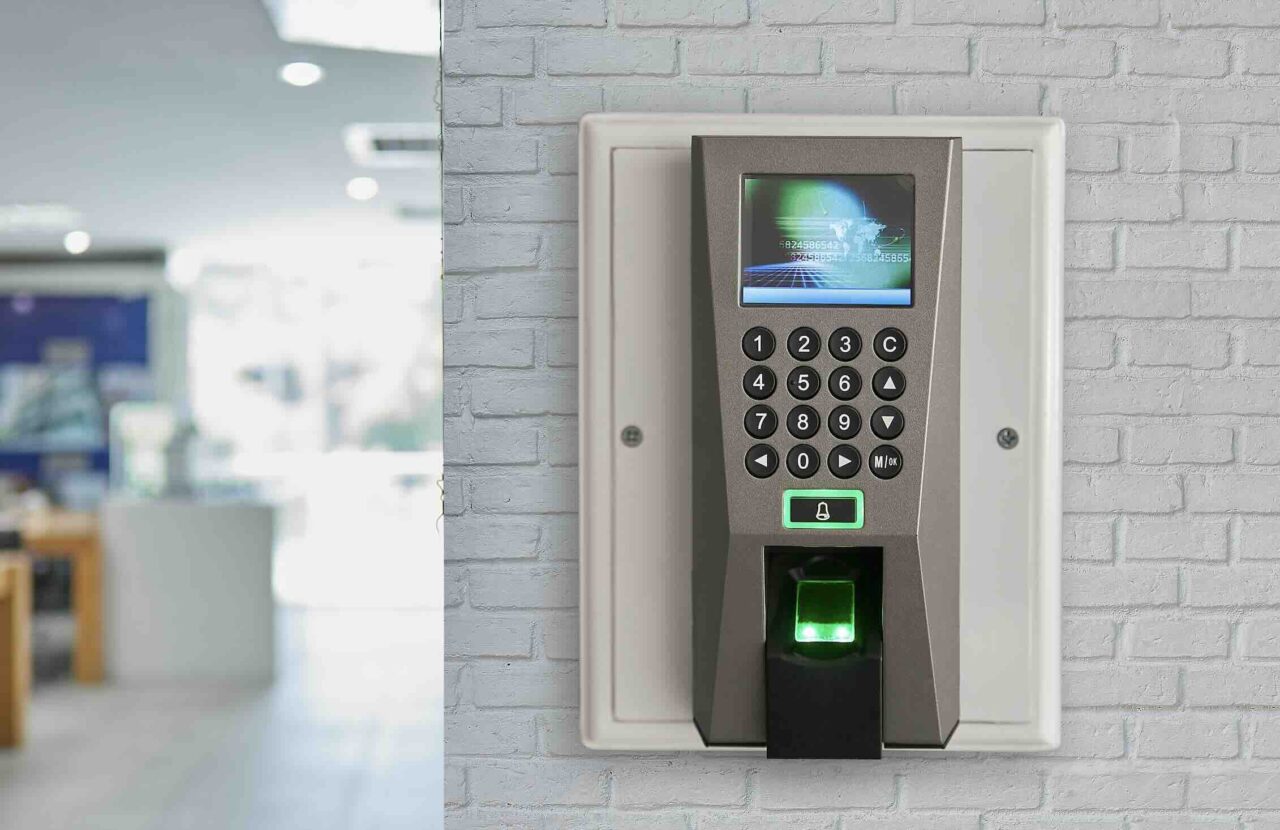Transforming Home Security with Residential Access Control Systems
Home security has evolved from basic locks to advanced residential access control systems. In the past, security relied on physical keys and simple deadbolts, which could be easily bypassed. Now, access control systems use cutting-edge technology for better protection.
Key Benefits of Residential Access Control:
1. Enhanced Security Protocols
- Unique access codes for each family member
- Real-time monitoring of entry attempts
- Instant alerts for unauthorised access
2. Convenient Management
- Remote access control via smartphone apps
- Temporary access codes for visitors
- No more lost or stolen keys
3. Peace of Mind Features
- Activity logs tracking all entries
- Integration with security cameras
- Emergency lockdown capabilities
These intelligent security solutions create a strong barrier against unauthorised entry while remaining easy to use. The introduction of residential access control systems represents a major step forward in safeguarding homes and families, establishing new benchmarks for contemporary property security.
Key Components of Modern Residential Security Systems
A comprehensive residential security system relies on multiple integrated components working in harmony to create an impenetrable shield around the property. Each element serves a specific purpose while complementing the others to establish multiple layers of protection.
Intrusion Detection Systems
These sophisticated sensors form the first line of defence against unauthorised entry:
- Motion Detectors – Advanced infrared technology identifies movement patterns within protected zones
- Glass Break Sensors – Acoustic sensors recognise the specific frequency of breaking glass
- Door/Window Contacts – Magnetic switches detect any unauthorised opening of entry points
- Shock Sensors – Identify vibrations from attempted forced entry
CCTV Surveillance Systems
Modern camera systems deliver crystal-clear monitoring capabilities:
- High-resolution imaging for clear identification
- Night vision capabilities for 24/7 surveillance
- Wide-angle coverage to eliminate blind spots
- Cloud storage for footage backup and retrieval
Environmental Sensors
Beyond intruder detection, these components protect against environmental threats:
- Smoke detectors
- Carbon monoxide sensors
- Water leak detectors
- Temperature monitoring systems
Control Panels
The central hub of the security system coordinates all components:
- Smart Integration – Connects with mobile devices for remote access
- Backup Power – Ensures continuous operation during power outages
- Zone Programming – Enables customised protection for different areas
- Event Logging – Records all system activities for future reference
Each component contributes unique capabilities to create a robust security infrastructure. The seamless integration of these elements establishes multiple security layers, making unauthorised access increasingly difficult while maintaining user-friendly operation for authorised residents.
Access Control Technologies: Securing Entry Points with Precision
Modern residential access control systems offer diverse authentication methods to secure entry points with exceptional accuracy. Each technology brings unique advantages and specific considerations for homeowners.
Biometric Authentication Systems
- Fingerprint scanners
- Facial recognition cameras
- Retinal scanning devices
These systems provide unmatched security through unique biological identifiers, eliminating risks associated with lost or stolen credentials. Biometric solutions excel in preventing unauthorised access but require careful consideration of privacy implications and backup authentication methods.
Smart Card and Key Fob Systems
- Proximity cards
- RFID technology
- NFC-enabled devices
These methods balance security with convenience, allowing quick access while maintaining detailed entry logs. The ability to instantly deactivate lost cards adds an essential security layer, though replacement costs should be considered.
PIN and Keypad Systems
- Digital keypads
- Bluetooth-enabled locks
- Combination locks
These traditional yet effective solutions offer straightforward operation and easy code changes. While cost-effective, they require careful management of access codes and regular updates to maintain security.
Multi-Factor Authentication
- Combined biometric and card access
- PIN with physical key backup
- Mobile app verification
This layered approach creates robust security through multiple verification steps. While offering enhanced protection, these systems need proper setup and user training to maintain efficient access.
Each access control method suits different residential needs based on:
- Security requirements
- User volume
- Budget constraints
- Environmental factors
- Integration capabilities
The selection of appropriate access control technology should align with specific property requirements while considering long-term maintenance and scalability needs.
The Power of Alarm Systems and Monitoring Services in Home Security
Modern alarm systems are like watchful guardians, creating a strong barrier around homes. These advanced systems work through a network of carefully positioned sensors that can detect:
- Unauthorised entry attempts
- Glass breakage
- Movement in protected areas
- Presence of smoke and carbon monoxide
The Strength of Alarm Systems: Professional Monitoring Centres
The real power of modern alarm systems comes from their connection to professional monitoring centres. When a security breach happens, these systems activate a multi-layered response:
1. Immediate Alert Activation
- Loud sirens
- Flashing lights
- Mobile notifications to homeowners
2. Professional Monitoring Response
- 24/7 surveillance by trained security personnel
- Real-time threat assessment
- Direct communication with emergency services
- Quick dispatch of security teams when necessary
Transforming Standard Alarms into Comprehensive Security Solutions
Back-to-base monitoring turns regular alarm systems into complete security solutions. The monitoring centre acts as a command hub, analysing each alert and coordinating appropriate responses within seconds. This quick action greatly reduces response times and improves the effectiveness of home security measures.
Detailed Records for Insurance Claims and Legal Proceedings
These monitoring services also keep detailed records of all security events, creating valuable documentation for insurance claims and legal matters. The combination of advanced alarm technology and professional monitoring provides homeowners with 24/7 protection and peace of mind.
Intercoms and Video Entry Systems: Enhancing Safety at the Doorstep
Modern intercom and video entry systems are an essential security measure for residential properties. These advanced devices allow homeowners to verify the identity of visitors using high-definition video feeds and clear audio communication before granting them access.
Key Features of Advanced Video Entry Systems
Advanced video entry systems offer:
- Real-time visual verification – HD cameras capture clear images of visitors day and night
- Two-way audio communication – Built-in speakers and microphones enable seamless conversation
- Mobile connectivity – Remote access through smartphone apps for screening visitors from anywhere
- Recording capabilities – Storage of visitor footage for future reference
- Multiple monitor points – Installation of additional screens throughout the property
Integration with Existing Security Infrastructure
The latest intercom systems work seamlessly with existing security measures:
- Compatibility with electronic door locks
- Connection to home automation systems
- Integration with CCTV networks
- Emergency call functionality
- Multiple user access codes
These features create a strong screening process at entry points, allowing residents to make informed decisions about granting access to visitors while keeping a safe distance from potential threats.

Smart Integration: Blending Technology with Residential Security
The rise of smart home technology has transformed residential security systems through seamless integration capabilities. Modern security solutions now work in harmony with various smart devices to establish a comprehensive, automated home protection network. Click here to learn about Access Control Sydney: the latest technology trends in 2025.
Key Smart Integration Features:
- Voice-controlled security commands through virtual assistants
- Automated lighting schedules that simulate occupancy
- Smart doorbell integration with security cameras
- Mobile app-based control of all connected security devices
- Temperature and environmental monitoring systems
- Automated door locks with remote access capabilities
These interconnected systems form a robust security ecosystem that adapts to homeowners’ daily routines. Smart scheduling enables automatic arming and disarming based on predetermined times or location-based triggers. The integration also extends to practical applications such as adjusting thermostats when the security system detects vacancy or activating lights when motion sensors are triggered.
Advanced Integration Capabilities:
- Real-time notifications for security events
- Customisable automation sequences
- Energy management through occupancy detection
- Centralised dashboard for all connected devices
- Remote system health monitoring
- Emergency service integration
The true power of smart integration lies in its ability to learn and adapt to household patterns. Machine learning algorithms analyse daily routines to suggest security improvements and identify potential vulnerabilities, creating an intelligent security system that evolves with changing needs.
Tailored Security Solutions for Diverse Residential Environments
Different residential properties face unique security challenges based on their location, design, and occupancy patterns. A high-rise apartment requires distinct security measures compared to a standalone suburban house.
Property-Specific Security Considerations:
- Urban Apartments: Focus on secure entry systems, video intercoms, and lift access control
- Suburban Houses: Emphasis on perimeter security, motion sensors, and outdoor surveillance
- Holiday Homes: Remote monitoring capabilities and automated security protocols
- Multi-generational Homes: Customised access levels for family members and carers
The effectiveness of residential access control systems lies in their adaptability to specific property requirements. A thorough security assessment identifies vulnerable areas and determines appropriate security measures. This tailored approach ensures optimal protection while maintaining convenience for residents.
Advanced security solutions now offer customisable features such as:
- Time-restricted access for service providers
- Zone-specific security protocols
- Adjustable sensitivity settings for different areas
- Scalable systems that grow with changing security needs
These personalised security configurations create robust protection strategies aligned with each property’s unique characteristics and resident requirements.
Structured Cabling: The Backbone of Advanced Security Installations
A robust structured cabling infrastructure serves as the critical foundation for modern residential security systems. This hidden network of cables and wiring connects various security components, ensuring seamless communication and reliable performance.
Key Elements of Structured Cabling:
- Cat6 or Cat6A cables for high-speed data transmission
- Fibre optic cables for long-distance connectivity
- Dedicated power lines for uninterrupted operation
- Cable management systems for organised installations
Professional cable installation prevents signal interference, reduces maintenance needs, and supports system scalability. A well-designed cabling infrastructure accommodates:
- Multiple security cameras
- Access control points
- Alarm sensors
- Network video recorders
- Emergency backup systems
The quality of cabling directly impacts system reliability. Proper shielding protects against electromagnetic interference, while strategic cable routing ensures optimal signal strength. This invisible yet essential infrastructure enables the integration of advanced security features while maintaining aesthetic appeal in residential settings.
Structured cabling creates a future-proof foundation that supports system upgrades and expansions, allowing homeowners to adapt their security solutions as technology evolves.
Cloud-Based Access Control Solutions: A New Frontier in Home Security Management
Cloud-based access control systems represent a significant advancement in residential security technology. These sophisticated platforms enable homeowners to manage their security systems through secure internet connections, offering unprecedented control and flexibility.
Key Benefits of Cloud-Based Solutions:
- Remote Management: Control access permissions, monitor entry logs, and adjust security settings from anywhere using mobile devices
- Real-Time Updates: Instant notifications when doors are accessed, alarms triggered, or system status changes occur
- Automatic Backups: Critical security data stored safely in the cloud, protected from local hardware failures
- Scalability: Easy system expansion without significant hardware investments
- Regular Updates: Security features automatically updated to address emerging threats
Potential Challenges:
- Internet connectivity requirements for system operation
- Data security considerations for cloud storage
- Initial setup costs for cloud-based infrastructure
The integration of cloud technology with residential access control systems creates robust security ecosystems. Property owners can grant temporary access to service providers, monitor children’s arrival times, and review historical access logs through user-friendly interfaces. These systems also enable seamless integration with other smart home devices, creating comprehensive home automation networks.
Advanced encryption protocols protect sensitive data transmission between home systems and cloud servers, ensuring secure operations. The ability to receive instant alerts and respond to security events in real-time transforms passive security systems into active protection measures.

Conclusion
Residential access control systems have transformed modern home security, offering an unparalleled level of protection and convenience for homeowners. These advanced systems integrate effortlessly into everyday life while providing strong defence against potential dangers.
The use of biometric scanning, cloud-based management, and smart home connectivity showcases the significant shift from traditional locks to all-encompassing security solutions. This technological progress gives homeowners full control, allowing them to monitor their property in real-time and respond quickly to any security issues.
For property owners looking for peace of mind, investing in residential access control systems is a smart choice to protect what matters most – the safety and security of home and family.

